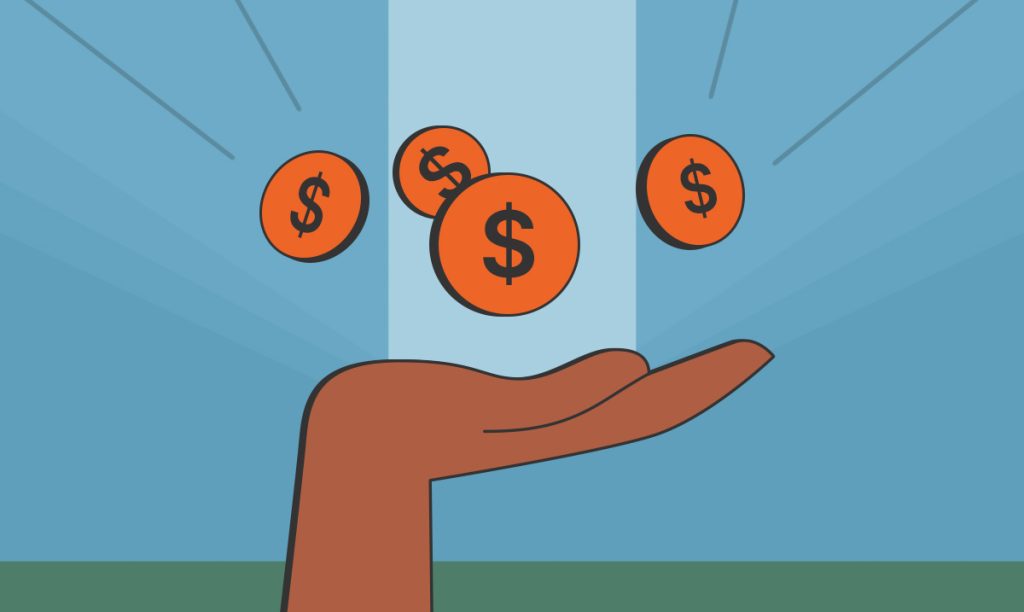What to do if you’re itching to start a business, but that perfect idea just doesn’t come to mind? Luckily for you, we have an answer (or rather ...
Emerging Trends in Consumer Behavior and Business Response
Written by: Carolyn Young
Carolyn Young is a business writer who focuses on entrepreneurial concepts and the business formation. She has over 25 years of experience in business roles, and has authored several entrepreneurship textbooks.
Published on July 30, 2024

As we venture further into the digital age, the intersection of technology, societal shifts, and economic dynamics continue to reshape how consumers interact with products and services. To shed light on this, we’ve consulted with entrepreneurs who offer their perspectives on the emerging trends in consumer behavior and the innovative strategies businesses should employ to stay on top of things.
Decreased Brand Loyalty
One trend I have noticed personally over the last couple of years is an overall decrease in brand loyalty. It seems like even repeated customers are more likely to be attracted by better prices or special deals from other companies. I’m sure this has something to do with the economic uncertainty many households are facing, but it does make it difficult for a business to retain a healthy and consistent customer base. I would say brands need to rise to this challenge by discovering what exactly causes consumers to feel loyal to a brand now. I think, increasingly, it’s coming down to values, and sustainability is a big one to pay attention to.
Carter Seuthe, CEO of Credit Summit Consolidation
Rise of Instant Gratification
Obviously, more and more people are buying things online — this really picked up during the pandemic and shows no sign of slowing down. So, one emerging trend we’re seeing now is the demand for fast delivery and free returns. When people buy most items online, they still want convenience, similar to buying those items in-store, which means getting the items quickly and being able to return them without being penalized. More and more people are thus choosing not to go through with online purchases if the estimated delivery is beyond a couple of days and/or if they see that they will be charged shipping for returns,
Andre Kazimierski, CEO of Improovy
Home Investment Surges
One trend we’re seeing lately is people investing much more in their homes, especially their outdoor spaces. This has been accelerating for a while. Some came from people spending a lot more time at home during the pandemic, and the current real estate environment has people staying in their current homes and renovating them to suit their needs. Inflation is another big one here. Especially if you can add home improvements, like pools and hot tubs, that will reduce your need to go out and spend money; people see this as a long-term investment in a quality living space. We’re also seeing more elaborate and specialized projects like outdoor kitchens, living rooms with TVs, and indoor/outdoor home offices.
Rafi Friedman, president of Coastal Luxury Outdoors
Embracing Sustainability
One of the most prevalent consumer behaviors — we are seeing is an increasing demand for sustainability from businesses. More and more consumers — especially Gen Zers — are beginning to care deeply about sustainability and eco-friendliness, and they’ve become aware of how their shopping habits can contribute to the problem. So, many are choosing to shop only from sustainable businesses. I think it’s wise for businesses to incorporate more sustainability into their practice, as this is a demand that’s only going to grow. Additionally, transparency about practices goes a long way toward building consumer trust in this regard.
Jeremy Yamaguchi, CEO of Lawn Love
Adapting Payment and Delivery Options
I noticed two strong emerging trends in consumer behavior that businesses NEED to respond to.
Today’s consumers want versatile payment and delivery options, and failing to meet their needs will lead to churn and losing business in 90% of cases. This means that businesses must explore additional payment/delivery options and make sure their customers are met with multiple options during the checkout process, whether that option is BNPL, cryptocurrency, free shipping, or anything else.
Tom Golubovich, head of marketing at Ninja Transfers
Quality Over Quantity
Consumers are continuing to demand quality products over the quantity of those products. For those businesses that are focusing on putting out the best products they can, they’re seeing success and are rewarded with loyal customers. For those businesses that put out mediocre or subpar products, their customers are looking to maximize their dollars elsewhere. Focus on delivering the best product you can, and you’ll see success. Otherwise, you risk losing your customers who want to get as much as possible for their money.
Dan Gallagher, VP of operations at Aegle Nutrition
Consumer Skepticism Toward AI-Generated Content
Consumers have very quickly adapted to all the AI-generated content that’s currently being pushed out by brands, marketers, startups, and the like. Users learned how to identify it and also attach a negative association to it — they question the value when they see AI-generated content. If your article is written by AI, it’s deemed less valuable, intelligent, or even true. If your art is AI-generated or AI-assisted, you’re cheating. For this reason, businesses should be careful about using AI too much in their communications, as consumers may lower the perceived value of the brand.
Bernard Meyer, senior director of content & creative at Omnisend
Personalized Advertising
Today’s audiences want brands and companies to not treat them just as consumers who will buy their deliverables but treat them personally and individually. After the coming of digitalization in marketing, consumers can very well differentiate between plain advertising and relationship building. So brands who approach customers after thoughtful research of their tastes, preferences, and dislikes have easily- paying and repeat customers on their list.
How should businesses respond to them?
Personalized emails — When sending emails to your current customers or potential audience, always address them by their first name. Don’t send automated emails because that completely looks salesy. Make them feel special by sending emails having the brand’s CEO’s name and signature at the end of the email.
Personalized packaging — Whenever the customers buy something from your brand, whether online or in-shop, give them products in packaging that is personalized. For example, a “Note from the Brand” would be like: “Hi John, thank you for giving us a chance to cater to your needs. Let us know how you feel about the product at our (email). Feedback always gives us room for improvement.” This is one important tip that will give you an edge over your competitors.
Give value to your customers — Don’t just restrict yourself to selling your deliverables. Go one step further and make them feel valued. Take the help of Artificial Intelligence to get their previous buying history and behavioral patterns to send something that will provide solutions to their pain points. For instance, if you are a beauty brand and they have bought an acne prevention lotion from you, then you can send a personalized blog on their email, saying something like, “Hi Jack, Hope you are doing well. Here’s an additional help to keep your skin away from breaking out this winter.”
These efforts will definitely bring your customers closer to your brand.
Alari Aho, founder & CEO of Toggl
Demang for Customization
Customization is every customer’s first choice. In every e-commerce app or platform, there is an option “recommended,” which is reading the behavior of the consumer and suggesting products and services. Every business, regardless of how many services they are offering, should have the option of customization to make the customer feel special. Customers love the concept of “made just for you,” and as a result, there is a high possibility that customers will try your services and products. Just make sure you guarantee them what you’ll give without compromising quality. If customization and quality work well together, it has the ability to benefit the firm.
Len Gauger, owner of Connect Space
Text Message Sales Inquries
I am seeing a major trend of text message responses to sales inquiries from online forms. Most leads generated through a website digitally seem to be more apt to texting rather than taking phone calls. This means businesses should consider more text messages in their attempts to contact online prospects. In fact, businesses should try to give out pricing as quickly as possible to prospects to fulfil their need and prompt them to call for purchase. The high level of transparency will result in more rewards and sales ultimately being made.
Timothy Connon, founder & CEO of ParamountQuote Insurance Advisors
Irreplaceable Value of Personal Interaction
There was an article in The Wall Street Journal (3/13/23) headlined Why Technology Is No Substitute for Meeting in Person.
Along the lines of people (and businesses) today contacting their clients and customers by email, to put it succinctly — You can’t kiss their ___ over a computer!
To use an old business adage — If you don’t schmooze, you lose and if you don’t see your clients, co-workers, and bosses in person, someone else will.
So, regarding people addicted to their phones, texts, and email — keep in mind that two of the keys to success (in life and in business) are flattery and vanity. Flattery and appealing to a person’s vanity. And remember —You can’t kiss their ___ over a computer!
So, see your clients, co-workers, and bosses in person… If you don’t, someone else will.
Robert Barrows, president of R.M. Barrows, Inc. Advertising & Public Relations
Human Interaction Over AI Solutions
Customers like the convenience of AI, but this year, there will be a trend in overall consumer behavior to lean towards businesses that still apply a human touch. Most customers have interacted with chatbots at some time, and while they can offer solutions to various issues, many are becoming weary of solely interacting with machines.
Therefore, customers will look for businesses that offer live human help, that have hands-on customer service, and that don’t appear to have bought into everything AI as simply a cost-saving measure. So, while AI will be expected and is certainly here to stay, there will be a trend in consumer behavior to patronize businesses that offer real human interaction.
Kevin Miller, SEO expert, angel investor & entrepreneur, kevinmiller.com
Rise of Smart Home Technology
I’ve noticed a significant trend in consumer behavior towards smart home technology integration. Consumers are looking for products that offer convenience, connectivity, and automation within their homes. Businesses in the LED light mirror industry should focus on incorporating smart features into their products. This could include integrating Bluetooth connectivity, voice control capabilities, or smartphone app compatibility to allow users to customize lighting settings, adjust brightness, and even access additional functionalities like built-in speakers or temperature sensors. Emphasizing the convenience and versatility of these smart features in marketing efforts can attract tech-savvy consumers and differentiate products in a competitive market.
Jessica Wilson, editor and co-founder of InYouths LED Mirrors (Instagram, Facebook, YouTube)
Subscribe to Our Newsletter
and gain insider access to cutting-edge business insights and trends.
Featured Resources

I Want to Start a Business But Have No Ideas
Published on August 7, 2024
Read Now

Customer Relationship Management Best Practices
Published on July 30, 2024
Customer relationship management (CRM) is no longer just a transactional process. Now, it’s a must for any business looking to thrive in thiscusto ...
Read Now

Funding Solutions for Small Businesses
Published on July 30, 2024
Starting a small business is more than just a dream; it’s a bold leap into innovation, passion, and resilience. Yet, one of the most dauntingchall ...
Read Now
Comments